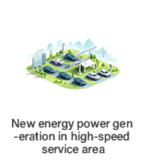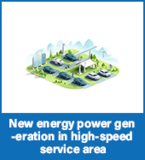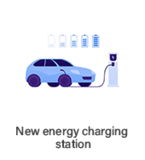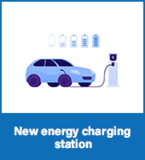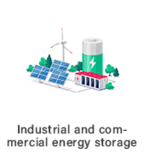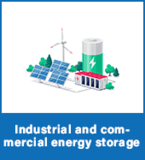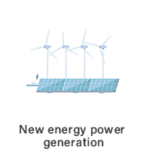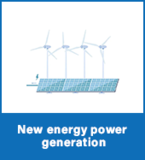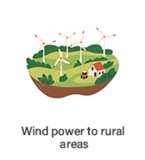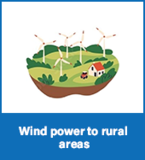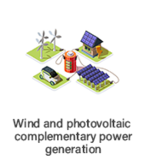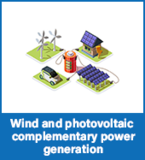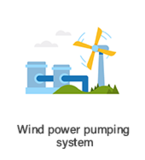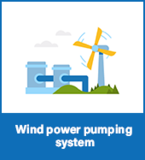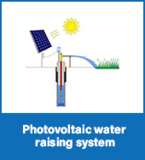PHOTOVOLTAIC WATER RAISING SYSTEM
Against the backdrop of global energy transition and environmental protection, photovoltaic water pumping systems, as an innovative green energy utilization method, are gradually receiving widespread attention. This system utilizes photovoltaic panels to convert solar energy into electrical energy, directly driving water pumps to work, achieving water source lifting and transportation without relying on traditional power grids. It not only meets practical needs such as agricultural irrigation and drinking water for humans and livestock, but also achieves the goals of green, low-carbon, and sustainable development. This plan aims to propose a comprehensive photovoltaic water lifting system solution to promote the widespread application of this technology.
System Overview:
一、System composition
Photovoltaic power generation system: including photovoltaic panels, inverters, controllers, etc., responsible for converting solar energy into direct current, and converting it into alternating current through inverters to drive water pumps.
Lifting system: composed of water pumps, water supply pipelines, water storage tanks, etc., it uses the electricity provided by the photovoltaic power generation system to drive the water pumps and achieve the lifting and transportation of water sources.
Intelligent monitoring system: integrating data acquisition, transmission, processing, and display functions, real-time monitoring of photovoltaic panel power generation efficiency, water pump working status, water level, flow rate, and other parameters to ensure efficient and stable operation of the system.
二、Working principle
Photovoltaic panels generate direct current under lighting conditions, which is converted into alternating current by an inverter and supplied to a water pump.
The water pump works under electric drive, lifting the water source from low to high and transporting it to the destination through the water pipeline network.
The intelligent monitoring system monitors the real-time operation status of the system, automatically adjusts the working frequency and water allocation of the water pump according to demand, in order to achieve the best operating effect.
Solution implementation:
一、Preliminary research and planning
Conduct detailed research on the lighting conditions, water source conditions, and electricity demand of the target area.
Based on the research results, develop a planning scheme for the photovoltaic water lifting system, including the layout of photovoltaic panels, selection of water pumps, and layout of water supply pipelines.
二、System Technology and Construction
Design photovoltaic power generation systems and water lifting systems that meet actual needs, ensuring reasonable equipment selection and optimized layout.
Construct photovoltaic power stations and water pump stations, install photovoltaic panels, inverters, water pumps, water storage tanks and other equipment.
Lay a water pipeline network, connect the water source and destination, and ensure smooth and unobstructed water supply.
三、System debugging and optimization
Conduct joint debugging of the system to ensure the collaborative work between the photovoltaic power generation system, water lifting system, and intelligent monitoring system.
Real time monitoring and data analysis of system operation status using intelligent monitoring system to optimize system operation strategy.
四、Operations Management and Services
Establish a professional operation and maintenance team responsible for daily maintenance, troubleshooting, and regular maintenance of the system.
Provide remote monitoring and technical support services to ensure the long-term stable operation of the system.
效益分析:
一、Economic benefits
Reducing electricity costs: The photovoltaic water pumping system achieves energy self-sufficiency and reduces dependence on external electricity.
Improving agricultural production efficiency: Stable irrigation water sources can help increase crop yield and quality, and increase farmers' income.
二、Environmental benefits
Reducing carbon emissions: Photovoltaic water lifting systems do not produce pollutants and greenhouse gas emissions, which helps improve environmental quality. Water conservation: By utilizing water resources rationally, excessive exploitation of groundwater has been reduced, protecting the ecological environment of water resources.
三、Social benefits
Promoting sustainable development: Photovoltaic water lifting systems have promoted the application of green energy and the achievement of sustainable development goals.
Enhancing public environmental awareness: Through demonstration effects, the public's awareness and participation in renewable energy and environmental protection have been increased.
The comprehensive solution for photovoltaic water lifting system is a green, low-carbon, and efficient way of energy utilization. Through the organic combination of photovoltaic power generation and water lifting system, this system not only meets practical needs such as agricultural irrigation and drinking water for humans and livestock, but also achieves green energy conversion and low-carbon emissions. The implementation of this plan will help promote the development and application of green energy, and facilitate the achievement of sustainable development goals.



